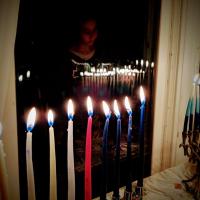Hanukkah is more than a holiday of oil and light—it’s a story of resilience, faith, and miracles that shaped Jewish history and identity. What does it mean to kindle light in the darkest time of year, and why is this holiday deeply connected to the Messianic hope? Discover how the courage of the Maccabees parallels the journey of modern Messianic Jews reclaiming their heritage. Explore prophetic allusions to Hanukkah hidden in the Torah and New Testament. Join us to uncover how this ancient celebration inspires renewed dedication in every generation.
Visit Our Messianic Synagogue
Beth Immanuel is a friendly and welcoming community. Click here to learn what to expect when you visit.
Join us as we enthrone the God of Israel with praise and uplift the name of Yeshua the Messiah!
Our Messianic Synagogue is located in historic Hudson, Wisconsin, just minutes away from St. Paul, Minnesota.
We always welcome visitors, but special events and holidays are wonderful times to visit.
Messianic Jewish Teaching
Download and listen to uplifting and insightful teachings presented by D. T. Lancaster and special guests.
Read and study teachings and Bible studies from a Messianic Jewish perspective on a variety of topics.
Grow and learn daily through interactive video lessons from a variety of teachers.








